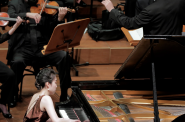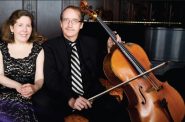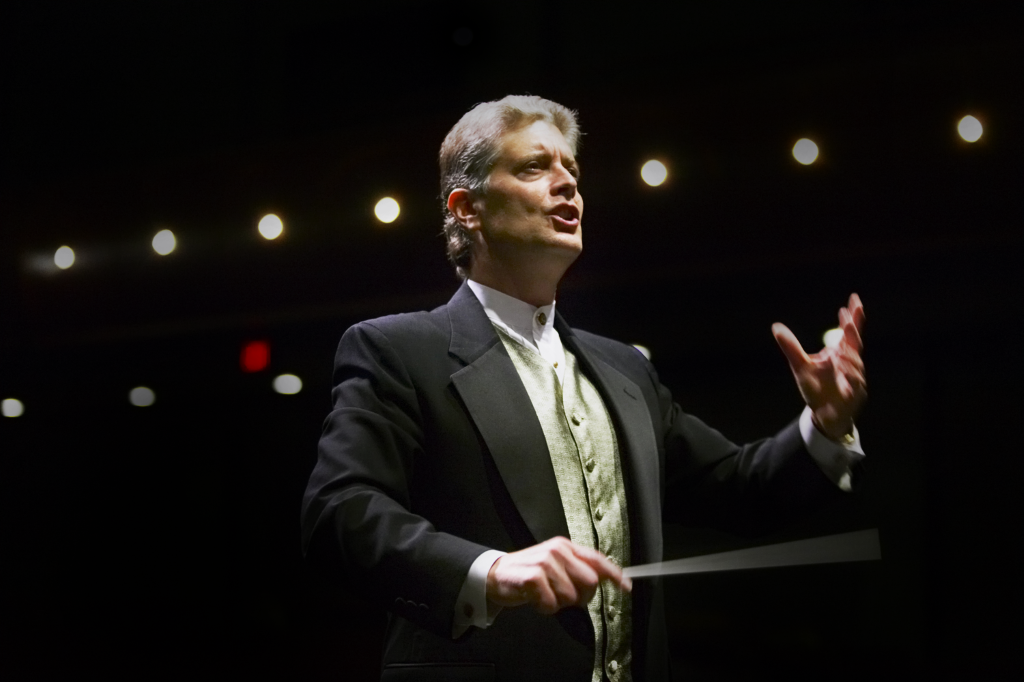Rick Hynson Conducts Farewell Concert As Bel Canto Leader
After 36 years as leader of the chorus, he tackles Elgar's The Dream of Gerontius.
The Bel Canto Chorus finishes its season on Sunday afternoon, May 12th, with a presentation of a full-length choral work by Edward Elgar, The Dream of Gerontius. This event with full chorus and 54-piece orchestra will mark the first appearance by Bel Canto in the Milwaukee Symphony Orchestra‘s Bradley Symphony Center. The work has been specially chosen by Richard Hynson, music director, as his final concert after 36 years with Bel Canto.
Elgar (1857–1934) was just beginning to be recognized as a major English composer after he wrote the Enigma Variations in 1899. He began work on the ambitious choral work, Dream of Gerontius in 1900, based on the epic poem by John Henry Newman. The poem is a detailed story of one man’s death and the process through which he attains heaven. Embedded in Catholic theology, the poem follows an ‘everyman’ being judged, surviving the battle between demons and angels over one’s soul, and entering purgatory before reaching heaven. The project was challenging in part because Elgar and other Catholics were a religious minority in a primarily Anglican country. The explicit Catholic doctrine was challenged as concerts were prepared. Hynson suggests that we take a broader perspective today:
We humans are trying constantly through art to communicate with one another, not necessarily through doctrine or dogma. (We share) feelings behind loss and the idea of redemption, the idea of guilt versus the goodness of life, and how we reconcile our adult lives because all of us have failed at some point in some way. … These emotions aren’t necessarily tied to any specific doctrine, but touch us in an emotional way, a spiritual way.
Wikipedia offers a precise summary of the 90-minute drama:
In the first part, we hear Gerontius as a dying man of faith, by turns fearful and hopeful, but always confident. A group of friends (also called “assistants” in the text) joins him in prayer and meditation. He passes in peace, and a priest, with the assistants, sends him on his way with a valediction. In the second part, Gerontius, now referred to as The Soul, awakes in a place apparently without space or time, and becomes aware of the presence of his guardian angel who expresses joy at the culmination of his task. After a long dialogue, they journey towards the judgment throne. They safely pass a group of demons, and encounter choirs of angels, eternally praising God for His grace and forgiveness. The Angel of the Agony pleads with Jesus to spare the souls of the faithful. Finally, Gerontius glimpses God and is judged in a single moment. The Guardian Angel lowers Gerontius into the soothing lake of Purgatory, with a final benediction and promise of a re-awakening to glory.
To tell the story, the choir is often broken into parts. One part of the choir may represent angels at one time or devils at another. And three soloists represent key parts of the story. A tenor role, which will be sung by Nicholas Huff, represents Gerontius and his Soul. An angel appears as a mezzo-soprano, sung by Clara Osowski. A baritone, sung by Leo Radosavljevic, is assigned the role of the priest in part one and the Angel of the Agony as a suppliant for Gerontius in part two.
The music is very typical of Elgar and other early 20th-century English composers containing slow legato sections, broad choral treatment, and strong harmonies. The story embedded within the poem reveals a much wider range of emotions, although without changing the overall texture of the music, which remains beautiful and harmonious from beginning to end. The orchestration often contributes to the drama, underscoring the narrative highs and lows of the story.
The concert on Sunday, May 12 begins at 3:00 p.m. at the Bradley Symphony Center at 212 W. Wisconsin Ave. Bel Canto’s website includes a number of articles offering context. Program notes containing the entire transcript of the text (a subset of Newman’s poem) are also online. A YouTube recording by the New Philharmonia Orchestra conducted by Sir Adrian Boult includes a convenient index to the sections.
Tickets may be purchased online. Tickets are also available to listen to a live stream, which will also be available shortly after the concert on an on-demand basis.
The new Bel Canto director, Jonathan Laabs, has been chosen and is starting his work this month. Laabs has been an active conductor, clinician, performer, and music educator throughout the Midwest and beyond. This summer marks his 11th as artistic director and conductor of Canticum Novum. He will be leaving his position as Professor of Music and Music Division Chairman at Martin Luther College in New Ulm, Minnesota, where he has conducted the College Chorale and Women’s Choir and also taught courses in conducting, choral literature, and aural theory. Laabs was associated with Bel Canto for some time as a section leader before moving to Minnesota.
If you think stories like this are important, become a member of Urban Milwaukee and help support real, independent journalism. Plus you get some cool added benefits.
Preview
-
PianoArts Festival Features Rising Stars
 May 28th, 2024 by Michael Barndt
May 28th, 2024 by Michael Barndt
-
Four Nations Ensemble Goes For Baroque
 May 13th, 2024 by Michael Barndt
May 13th, 2024 by Michael Barndt
-
Mozart on Prospect Avenue
 May 9th, 2024 by Martha Brown
May 9th, 2024 by Martha Brown



















